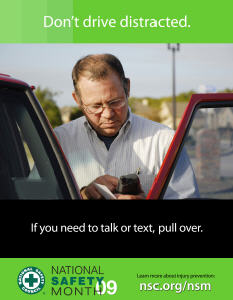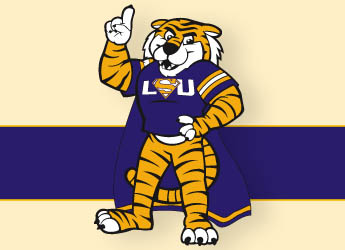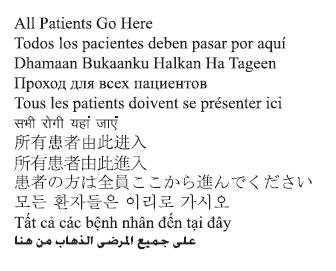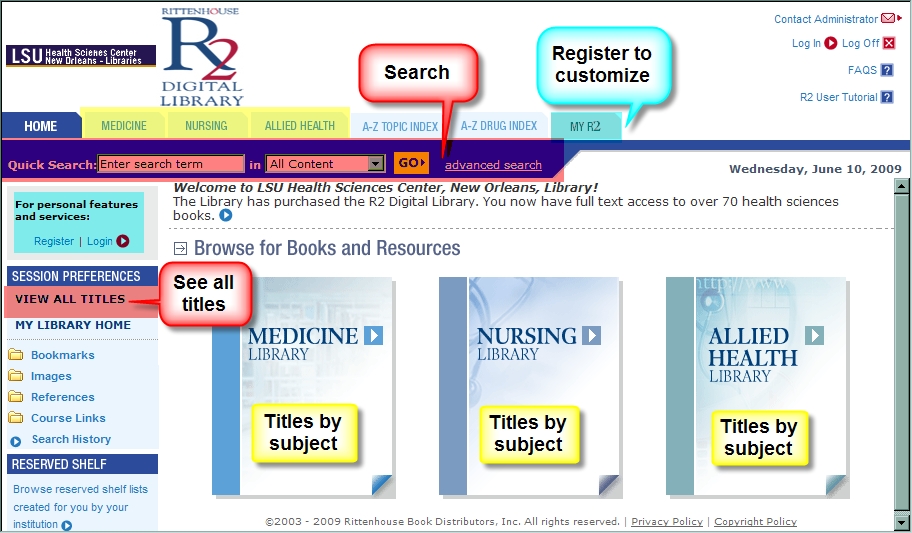Were you too distracted talking on your cell to realize it’s Distracted Driving Week?

According to the National Highway Traffic Safety Administration, driver inattention is responsible for about 80 percent of all traffic collisions. In recognition, the National Safety Council has deemed June 22-28th Distracted Driving Week, part of National Safety Month 2009. Get fact sheets, traffic safety policies and watch the video Death by Cellphone on their website.

Congratulations to the LSU Tigers, who defeated the Texas Longhorns 11-4 at the College World Series last night. The title is LSU’s sixth championship and the first since 2000.
Complete coverage at http://www.lsusports.net/
(Eds note: I stumbled upon this article and didn’t notice it was from 2005 until after I wrote it up! However, I think it deserves a little more limelight. For more recent press releases about psychology and mental health, visit http://www.apa.org/releases/homepage.html)
A 2005 press release from the American Psychological Association announces new research in the field of sarcasm. Israeli researchers at the Rambam Medical Center in Haifa and the University of Haifa, studied 25 participants with prefrontal-lobe damage, 16 participants with posterior-lobe damage and 17 healthy controls. All participants listened to brief recorded stories, some sarcastic, some neutral, that had been taped by actors reading in a corresponding manner, then answered questions that gauged the participant’s comprehension of the speaker’s true meaning. Participants with prefrontal damage were impaired in comprehending sarcasm, whereas the people in the other two groups had no such problem.
According to the APA, “The findings fit what we already know about brain anatomy. The prefrontal cortex is involved in pragmatic language processes and complex social cognition, thus it followed that participants with prefrontal damage had faulty ?óÔé¼?ôsarcasm meters.?óÔé¼?Ø At the same time, damage to the ventromedial area, which is involved in personality and social behavior, will disrupt not only understanding sarcasm but also understanding social cues, empathic response and emotion recognition. The authors write, ?óÔé¼?ôUnderstanding sarcasm requires both the ability to understand the speaker?óÔé¼Ôäós belief about the listener?óÔé¼Ôäós belief and the ability to identify emotions.”
CITATION:
?óÔé¼?ôThe Neuroanatomical Basis of Understanding Sarcasm and Its Relationship to Social Cognition,?óÔé¼?Ø S.G. Shamay-Tsoory, PhD, and R. Tomer, PhD, Rambam Medical Center and University of Haifa, and J. Aharon-Peretz, MD, Rambam Medical Center; Neuropsychology, Vol. 19, No. 3.
Next week on Wednesday, July 1st the various schools of LSUHSC will be offering screening for high blood pressure, diabetes, depression, lung function, colorectal cancer and oral cancer, as well as vaccinations and education on a variety of health topics. The event will take place from 1 – 6 p.m. at Grace Episcopal Church, 3700 Canal St. It is part of the Congressman Cao AAA Health Care Initiative. For more information, see the official LSUHSC press release.
If you’ve been in the Isché Library in the last couple of weeks, you may have noticed some shifting projects going on. The Library Staff has moved or will be moving materials on all 3 floors of the Library. The 1st phase of shifting on the 4th floor (the section in front of the elevator) should be completed this week. The huge shifting project on the 5th floor will begin on Monday, June 29th. We apologize in advance for any inconvenience that the noise of shifting causes.
The FDA has just released a warning for consumers to not eat “prepackaged Nestle Toll House refrigerated cookie dough due to the risk of contamination with E. coli O157:H7.” They recommend that all dough be discarded because handling the dough to cook it could spread the bacteria.
This month AJN, American Journal of Nursing features a case study of a patient that proves this point. A severely disabled man received such poor oral care from nursing home personnel that his oral and nasopharyngeal secretions built up (?óÔé¼?ôinspissated?óÔé¼?Ø), and he died from asphyxia. The lead author, Joseph A. Prahlow, was the pathologist in charge of the autopsy; the article features graphic photos of the thickened secretions that blocked his airway. A companion article by two dentists, Pamela S. Stein and Robert G. Henry, gives nurses suggestions on how they can overcome barriers to providing oral care to patients.
Here is a link to other articles on the subject of oral hygiene of the elderly or patients in long term care.

Hospital sign: “All Patients Go Here” in multiple languages
An article from ACRL News pointed me to a new resource offering health information translations:
Health Information Translations
This resource, sponsored by several medical centers in Ohio, provides education and procedural instructions about health topics for patients with limited English proficiency. Search by keyword or language and retrieve a short document in English about that particular health issue followed by the translation of the article. Some documents have audio files. For example, the document on ?óÔé¼?ôbreast biopsy?óÔé¼?Ø explains the different kinds of biopsies, the procedure the physician will follow and instructions for the patient, all in Spanish. This is a source for timely, accurate medical vocabulary as well as practical application, since the translation of common procedures and instructions into Spanish is ready to be handed out to the patients. Includes translations of disaster preparedness plans. Access: http://www.healthinfotranslations.com/.
One of the best things I like about it are the common hospital signs with multiple translations (see photo above). The signs are available for download in PDF format for free on their site.
The latest issue of the Library?óÔé¼Ôäós Newsletter has been released. Archives of the newsletter are also available from 1998 to the present.
The city of New Orleans has been chosen as one of the 100 sites for the Healthy Start Program.
According to The Gambit’s Blog of New Orleans, “Healthy Start is a federally-funded initiative that was introduced in 1991 to lower the alarmingly high rate of infant mortality in the United States by addressing the disparity in prenatal care afforded women at different economic levels.”
Take the time to learn more about this great initiative providing prenatal and postnatal care to the women and children of our city.
You can now easily track disciplinary action against physicians and other licensed health care professionals in Louisiana through the Louisiana State Board of Medical Examiners homepage.
http://www.lsbme.louisiana.gov/
There is even an RSS feed available, so you could set up a folder in your Microsoft Outlook email to track who’s been reprimanded, warned or summarily suspended from practice in our fair state. More info on setting up RSS in Outlook here.
The LSU Faculty Senate has created a “A Brief Review of the Issues” pertinent to our health sciences center, the proposed Academic Medical Center and state legislative bill HB 830 (the Tucker Bill). This document serves to present information in “a concise form that you can read and then do with what you wish.” It is provided by the Faculty Senate Executive Committee and LSUHSC Faculty Senators, with the support of Chancellor Hollier.
Read the report.
Related:
Original House Bill No. 830:
http://www.legis.state.la.us/billdata/streamdocument.asp?did=646400
Official page of Rep. Jim Tucker, for which the bill is named:
http://house.louisiana.gov/H_Reps/members.asp?ID=86
A Harvard Psychiatrist Explains Zombie Neurobiology
In Night of the Living Dead, zombies are brought back from the dead by a “mysterious force” that allows their brains to continue functioning. But how exactly does a zombie brain function? Finally, a Harvard psychiatrist has the answers.
Through education Dr. Steven C. Schlozman is an assistant professor of psychiatry at Harvard Medical School and a lecturer at the Harvard School of Education. He is also an avid sci-fi and horror fan – and, apparently, the world’s leading authority on the neurobiology of the living dead. He has even drafted a fake medical journal article on the zombie plague, which he calls Ataxic Neurodegenerative Satiety Deficiency Syndrome, or ANSD (the article has five authors: one living, three “deceased” and one “humanoid infected”).
Check out some of the scholarly articles Dr. Schlozman has published.
The Ische’ Library has a large selection of Neurobiology books if you would like even more info.
The LSUHSC Libraries have recently purchased over 70 health sciences books in multiple subject areas of medicine, nursing, and allied health through the Rittenhouse R2 Digital Library. R2 is available on campus and remotely through WAM. Please use our library Electronic Resources R2 page for access: http://www.lsuhsc.edu/no/library/ss&d/data/r2library.html. Searches can be performed on our entire R2 collection, a subject collection or an individual book. You may also browse a book from beginning to end or use the Table of Contents to help navigate your way. To see all currently purchased titles, please click “View all Titles.” To see books in a particular subject, click the subject menu tabs at the top or the subject “books” in the center. Dentistry and public health titles are included under the subject of medicine, and dental hygiene titles are included under the subject of allied health. You can also register for a free account which will allow you to customize your R2 Library by bookmarking chapters, saving images, assigning course links, and more.

Yesterday workers began adding bracing to the tops of all the shelves on the 4th & 5th floors of the Isché Library. The project should be completed in about a week. The bracing is being added to ensure the stability of the shelves; we don’t want our library ending up like the one in the Mummy.
~edit~ The project was completed on Friday, June 12th.

 myLSUHSC
myLSUHSC

